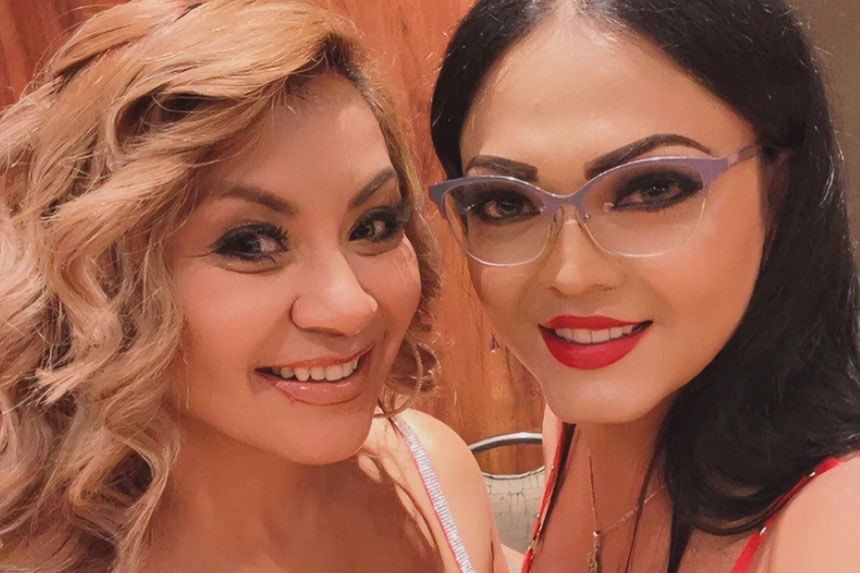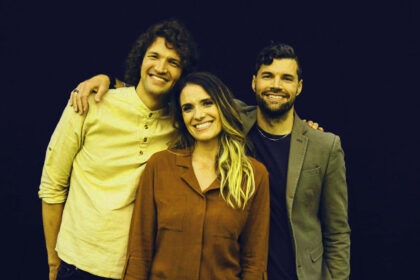Sandra Paola López Ramírez is a dancemaker, improviser, and cultural organizer who blends performance with activism. Born in Bogotá, Colombia, she now lives along the U.S.-Mexico border where she creates work that connects body, land, and community. As a border artist, her practice uses improvisation to address issues of identity, healing, and social justice through projects that invite people to move, create, and transform together.
Early Life & Education
Sandra Paola grew up in the Andes mountains of Bogotá, Colombia. She moved to the United States in 2004 to pursue her dance career as a performing artist.
Her educational path shaped her approach to art and community. She earned a BFA in Dance Performance from Missouri State University, studying psychology and religious studies alongside her dance training. She later completed a Master of Education in Curriculum and Instruction with an Aesthetic Education focus from the University of Illinois at Urbana-Champaign. She also holds an MFA and a certificate in social therapeutics, which informs how she uses performance for collective healing. Living in the Midwest for a decade, she experienced being othered because of her mixed heritage, language, and gender. This experience pushed her to use dance activism as a way to resist stereotypes and create new possibilities for herself and others.
Artistic Philosophy & Influences
This Colombian-American artist views the body as a doorway for individual and collective healing. López Ramírez’s work draws from her Andean roots and her life along the U.S.-Mexico border.
Her relationship to the Andean landscape, the music and dances from Afro and indigenous peoples in Colombia, and her mixed heritage deeply influence her artistic work and activism. Now living in the Chihuahuan desert, she explores how body, ancestral memory, and land connect. As a somatic practitioner, she focuses on embodiment, kinesthetic listening, and touch as tools for building relationships. Her practice challenges dominant aesthetics by centering process over product. She sees humans as “sacs of particles in constant search for balance,” a view that guides her work in creating spaces where people can discover their connectedness. This transformative artist uses collaborative improvisation to help participants continuously reinvent themselves rather than being defined by societal labels.
Key Projects and Works
As an artistic director, Sandra Paola creates performances that activate public spaces, natural landscapes, and non-traditional venues. Her projects blend artistic research with community engagement, contrasting sharply with traditional gallery-based approaches.
Experiencing the Bosque & Here, and the Wind
In November 2022, more than 40 dancers engaged with various sites at Rio Bosque Wetlands Park, presenting choreographies developed from more than a year of public programs, workshops, and community-engaged practices. The Experiencing the Bosque project brought together artists, activists, educators, and students to explore the unique ecosystem of the bosque. This site-specific choreography examined how movement, land, research, and conservation intersect. In 2023, the Rubin Center presented “Here, and the Wind,” an exhibition documenting the creative process behind Experiencing the Bosque. This exhibition included a documentary film, photographs, written texts, drawings from workshop participants, wearable sculptures, and a sound installation. The show demonstrated how process documentation can be as valuable as the final performance, making visible the many voices and bodies that shaped the work. Recent iterations include “our secrets as we shed them: Experiencing the Bosque reimagined” presented in April 2023.
ImprovISA & Community Engagement
Sandra Paola co-founded the Institute for Improvisation and Social Action (ImprovISA) with Chris Reyman. The organization, formerly called in2improv, started in Urbana, Illinois before relocating to the U.S.-Mexico border in 2014. This artist-organizer partnership exemplifies her binational practice.
Throughout its 10-year history, ImprovISA has reached hundreds of people all over the U.S. and in France, Denmark, Colombia, Germany, Canada, and Mexico. The organization uses experimental improvised performance to generate questions, open new possibilities, and challenge long-held beliefs about aesthetics. ImprovISA’s work springs from music and dance practices while building connections to social justice, environmental restoration, and healing. As part of the border arts community, the organization creates environments where people who don’t usually have the chance to come together can gather to co-create something new. Their community workshops respond to regional needs and build with other individuals and organizations addressing shared concerns. Paola’s practice manages programs in El Paso, Bogotá, and Ciudad Juárez, focusing on empowering under-served communities through participatory performance.
Teaching, Residencies & Institutional Role
Sandra Paola serves as faculty in the Theatre and Dance program at the University of Texas at El Paso. As an arts educator, she teaches interdisciplinary arts and community-engaged practices.
She served as the inaugural interdisciplinary artist in residence at the Rubin Center for the Visual Arts in Spring 2021. López Ramírez leads the Rubin Center’s emerging Community Engaged Practices in the Arts Program, collaborating with artists, campus and community partners to create opportunities for students to develop meaningful practices that value both aesthetic and relational outcomes. During this residency, she coordinated a virtual spring speakers series on artist-led, community-engaged practices featuring artists addressing racial justice, immigration, and indigenous rights. She has presented at national and international conferences, including TEDx El Paso and the International Drama/Theater and Education Association conference in Paris. Recent presentations include “Maternidades y la Danza” and “Dancing into the Fourth Body: Becoming a Mother During the Pandemic” in 2021. She has also been an Institute Associate at the East Side Institute, where she connects her practice to social therapeutic approaches. Her teaching emphasizes how students can develop their own voice through improvisational practice while learning to work collaboratively across disciplines.
Challenges, Innovations & Creative Process
Sandra’s methodology challenges traditional notions of what counts as art. She makes the creative process visible rather than hiding it behind polished final products.
Her approach emphasizes activity over commodification. As a creative practitioner, she focuses on how people do what they do together rather than treating performances as products to sell. This means workshops, conversations, experiments, and failures all become part of the work. The exhibition “Here, and the Wind” offered an innovative curatorial approach to making visible the creative process of research, de-centering the object or final performance as the culmination of creative work. She works across disciplines, bringing together musicians, visual artists, scientists, and community members. This requires navigating different languages, expectations, and ways of working. As a socially engaged practitioner, her methodology treats artistic research as a form of shared interdependence among human and more-than-human worlds. She uses site-specific work to respond to particular places, histories, and communities rather than imposing predetermined concepts. She co-directed the dance festival “Gathering for Water” in April 2023, further demonstrating her commitment to environmental stewardship through performance.
Lessons from Sandra Paola’s Practice
Artists and organizers can learn several strategies from this movement artist’s approach to blending creativity with social action.
First, treat process as valuable as product. Document the journey, not just the destination. Share the questions, experiments, and collaborative moments that shape your work. Second, work across disciplines and borders. Real change happens when different perspectives and practices meet. Build partnerships with people outside your usual circles. Third, use improvisation as a tool for empowerment. Create spaces where people can discover new ways of relating to themselves, each other, and the environment. Fourth, root your work in place. Pay attention to the land, history, and community where you’re working. Let the specific context shape what you create. Finally, integrate art and organizing. Don’t separate your creative practice from your commitment to justice as a cultural worker. Find ways to make them feed each other.
- Her geographic journey shapes her work: Moving from Bogotá’s Andes mountains to the U.S.-Mexico border region has given her a unique perspective on how landscape, culture, and borders influence artistic practice and identity.
- She founded ImprovISA to empower communities: The organization has grown from local work in Illinois to international reach, using improvisation as a tool for social transformation across borders.
- Her “Experiencing the Bosque” project models ecological art: This multi-year work showed how performance can engage diverse audiences in exploring environmental issues through embodied practice and community collaboration.
- She makes creative process visible: Through exhibitions like “Here, and the Wind,” she challenges traditional art world hierarchies by showing that the journey of creation matters as much as the final performance.
- Her interdisciplinary approach bridges multiple fields: She connects dance, activism, education, environmental conservation, and social therapeutics, demonstrating how cross-disciplinary work can address complex social issues.








